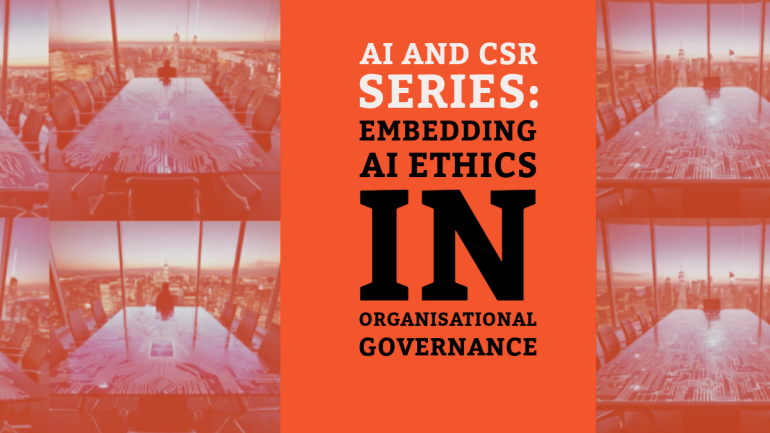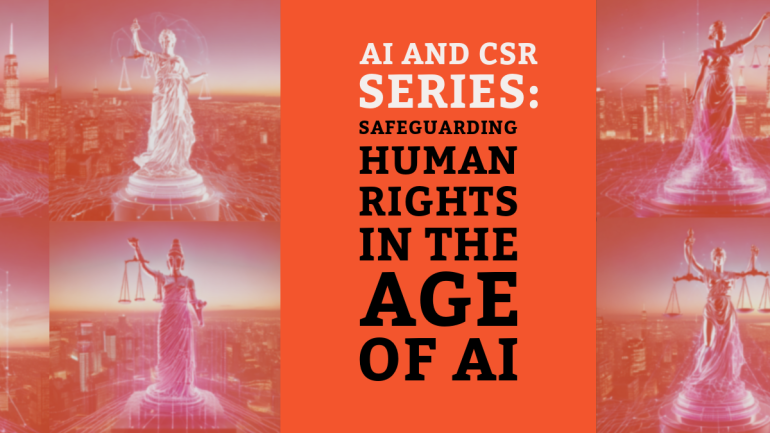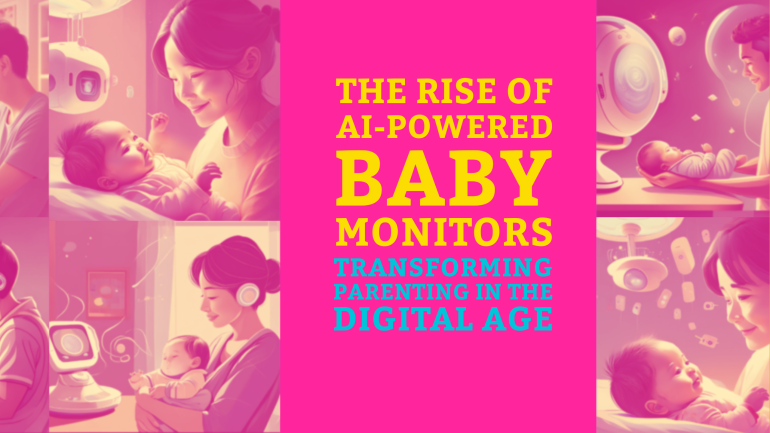Table of Contents
You may also interested:
TL;DR: Organizational Governance in AI (ISO 26000)
- Organizational Governance & AI: Organizational governance – how decisions are made and overseen – is crucial for ethical AI use. Strong governance ensures AI aligns with social responsibility and company values.
- Board-Level AI Oversight: Companies are elevating AI ethics to the boardroom and C-suite. Board committees and executives now guide AI governance to manage risks and uphold ethical AI practices
- Real-World Examples (2024–2025): Firms like IBM, Microsoft, and Baidu have implemented AI ethics boards, principles, and governance structures. These ensure accountability and prepare for regulations like the EU AI Act
- Responsible Leadership = Trust: Integrating AI oversight into corporate governance builds trust and sustainability. Ethical leadership in AI isn’t just compliance – it’s seen as good business and a competitive advantage.
In corporate social responsibility (CSR) terms, organizational governance is “the system by which an organization makes and implements decisions in pursuit of its objectives”. ISO 26000 – the international CSR standard – highlights that effective governance is the foundation for integrating ethical and responsible practices throughout a company. When it comes to artificial intelligence, this means that the way an organization governs itself (its leadership, policies, and oversight processes) directly determines whether its AI initiatives are conducted responsibly. Good governance in AI entails clear accountability, transparent decision-making, and a culture that prioritizes ethics at every level – from the boardroom to developers. In essence, applying ISO 26000’s Organisational Governance principle to AI means embedding ethical AI considerations into the core corporate governance framework, ensuring that AI development and deployment align with societal values, stakeholder expectations, and legal obligations.
Why Ethical AI Governance and Leadership Matter
As AI systems become more powerful and pervasive, ethical AI governance and strong leadership oversight have become business imperatives. AI can unlock immense value, but it also introduces novel risks – from biased algorithms and privacy breaches to safety issues and reputational damage. Real‑world incidents of AI failures underscore the stakes. For example, cases of AI deepfakes spreading disinformation, chatbots leaking confidential information, or automated systems demonstrating unfair bias have highlighted the fallout when AI lacks proper oversight. Such incidents erode public trust and can lead to legal liabilities and public backlash.
Despite these high stakes, many organizations have been slow to adapt their governance. Surveys show that boards and executives are still catching up: in 2023 only 14% of corporate boards discussed AI at every meeting, and 45% of boards hadn’t included AI on their agenda at all. At the same time, AI adoption is racing ahead of oversight. While 95% of senior business leaders say their organizations are investing in AI, only about 34% have put in place robust AI governance measures, and just 32% are actively addressing issues like bias in AI models (EY Pulse 2024). Shockingly, only 11% of executives report implementing responsible AI practices across their organizations.
From a leadership perspective, this is a serious concern. Without clear ethical leadership, AI projects may proceed without sufficient checks, leading to “move fast and break things” outcomes that harm stakeholders. Strong leadership commitment to AI ethics can prevent these issues. ISO 26000 emphasizes accountability, transparency, and ethical behavior as pillars of governance – principles highly relevant to AI. When boards and C‑suites champion responsible AI, it sets a tone from the top that encourages teams to integrate ethical risk management into AI development. In short, ethical AI leadership is now essential for managing risk, maintaining public trust, and ensuring AI initiatives contribute positively to business and society.
Board and C-Suite Oversight for Responsible AI
Leading companies are recognizing that AI governance must be elevated to the highest levels of organizational oversight. Just as boards of directors oversee financial and strategic risks, they are increasingly expected to oversee AI ethics and risk management. In fact, investors and regulators are beginning to treat AI governance as part of good corporate governance. In 2024, over 31% of S&P 500 companies disclosed that their boards had formal oversight of AI – for example via a board committee responsible for AI risks, by appointing directors with AI expertise, or even creating dedicated AI ethics boards. This is a significant increase from prior years, reflecting growing pressure on boards to treat AI as a “board-level” issue. Analysts note that shareholders are asking tough questions about how companies are managing AI’s impacts on society and return on investment. The drive for greater disclosure on AI ethics and clear board accountability is ramping up, with investors expecting “robust information on the management of human rights and other risks” of AI and demanding “clear and solid board oversight” as part of the corporate response.
At the C-suite level, companies are similarly integrating AI oversight into executive roles and committees. Many firms have set up internal AI ethics committees or councils that include senior executives from diverse functions (e.g. technology, legal, compliance, and public policy). These bodies ensure that AI initiatives are reviewed for ethical implications and align with the company’s values and policies. Some organizations have even created new leadership roles such as Chief AI Ethics Officer or expanded the remit of risk officers to include AI. The goal is to have clear ownership of AI governance: someone or some group at the top is accountable for guiding AI strategy responsibly and is empowered to veto or modify AI projects that pose undue ethical risk. This top-down oversight complements the bottom-up efforts of project teams, creating a checks-and-balances approach to AI innovation. Crucially, when board members and executives actively engage in AI governance, it sends a message that responsible AI is a strategic priority, not just an IT issue. It also prepares the company to navigate emerging AI regulations and avoid compliance pitfalls. As we’ll see in the following examples, leading organizations are already putting these governance structures into practice.
Real-World Examples of AI Governance in 2024–2025
To illustrate how organizational governance principles are being applied to AI, let’s examine several real-world case studies from 2024–2025. These examples show how companies and governments are operationalizing ethical AI oversight at the board and executive level, in line with ISO 26000’s guidance on governance and social responsibility.
IBM: An AI Ethics Board Leads the Way
IBM has been a pioneer in integrating ethical oversight into its AI efforts. In 2019, IBM established a multidisciplinary AI Ethics Board with a mandate to guide responsible AI development. This board – composed of senior leaders across IBM’s business, research, and ethics functions – is “responsible for governance and decision-making in responsible AI”. Notably, IBM introduced this governance structure well before any AI-specific regulations existed, signaling ethical leadership from the top. The AI Ethics Board evaluates new AI products, sets internal policies (like IBM’s AI Principles), and reviews potential AI use cases for alignment with IBM’s values of trust and transparency. Over the past five years, this board has helped embed an ethics-by-design culture within IBM. For instance, IBM reports that it developed an AI Risk Atlas in 2024 under the board’s guidance to map AI risks across the lifecycle and provide practical mitigation steps for its teams. The existence of a high-level ethics board means that issues such as bias or customer impact are considered at the same strategic level as technical performance or market fit.
IBM’s top executives champion the notion that AI governance is good business. In reflecting on the Ethics Board’s impact, IBM stated that “AI governance is no longer a nice-to-have; it’s a must-have” and that every organization using AI “must establish strong AI governance practices to be regulation-ready and mitigate potential risks and harm.” Moreover, IBM argues that “good governance is good business,” delivering tangible and intangible ROI by building customer trust. This perspective aligns closely with ISO 26000’s view that governance is crucial for responsible behavior. IBM’s case shows that proactive organizational governance – via an AI Ethics Board at the C-suite level – can drive ethical AI innovation and prepare a company for the stricter regulations now emerging worldwide.
Microsoft: Multi-Level AI Governance Structure
Microsoft has likewise embedded responsible AI governance throughout its organizational hierarchy, from board of directors to engineers. Microsoft’s Board of Directors formally oversees AI ethics through its Environmental, Social, and Public Policy Committee, which provides guidance and oversight on responsible AI policies and programs. This means AI-related opportunities and risks are regularly reviewed at the board committee level, ensuring accountability at the very top. At the executive level, Microsoft formed a Responsible AI Council co-led by President Brad Smith and CTO Kevin Scott – two of the most senior C-suite leaders. This council brings together business leaders with experts in AI research and policy to grapple with the company’s biggest AI ethics challenges and to drive the evolution of Microsoft’s AI principles and practices.
A simplified illustration of a multi-layer AI governance structure (based on Microsoft’s model, with board oversight, a leadership council, a dedicated Responsible AI Office, and support from research, policy, and engineering teams).
In addition, Microsoft created an Office of Responsible AI (ORA), a dedicated team tasked with operationalizing the company’s AI ethics principles across all product groups. The ORA sets internal rules and standards (such as Microsoft’s Responsible AI Standard), provides training and resources to teams, reviews sensitive AI use cases, and ensures that feedback loops exist between policy, engineering, and research divisions. Notably, Microsoft’s approach combines top-down and bottom-up elements: a federated model where no single team is solely responsible, but top-down support from leadership enables a culture of shared responsibility. The company also continues to rely on its Aether Committee (a group of AI researchers and ethicists) to advise on emerging issues and keep its governance on the cutting edge. This multifaceted governance system shows how an organization can integrate ethical AI oversight into various levels: the board sets the tone, senior executives coordinate strategy through a council, a central office enforces and coordinates day-to-day governance, and domain experts inform policy with research insights. Microsoft even publishes an annual Responsible AI Transparency Report detailing its efforts, underlining the transparency aspect of governance. By building these governance layers, Microsoft ensures that AI ethics is woven into product development and management decisions, not siloed or ignored. This positions Microsoft to comply with upcoming regulations and to address stakeholder expectations proactively.
Baidu: AI Ethics Committee and Principles in China
Chinese tech giant Baidu provides another instructive example, particularly in the context of a different regulatory environment. In recent years, China’s government has issued AI ethics guidelines and draft regulations, and Baidu has aligned its corporate governance accordingly. In November 2023, Baidu established a formal Technology Ethics Committee at the top of the organization. This committee’s role is to oversee ethical issues in the company’s AI research and products – a clear signal that AI governance is being addressed at the leadership level. Building on earlier efforts (Baidu’s CEO Robin Li had outlined four AI ethics principles back in 2020), Baidu took a major step in August 2024 by publishing a comprehensive set of AI governance principles called the “Baidu AI Ethics Measures.” These published principles, overseen by the new ethics committee, cover key aspects of responsible AI: they reaffirm core values like safety, fairness, and user empowerment, and they describe Baidu’s oversight processes, such as the committee’s role, ongoing AI ethics training for staff, participation in industry standards, and stakeholder engagement. By disclosing its AI principles and governance structure publicly, Baidu aimed to increase transparency and reassure investors and customers that it is mitigating AI risks.. According to an engagement case study by investor group Hermes EOS, establishing and publishing these AI governance principles should put Baidu in a better position to manage AI risks and capture opportunities responsibly. Baidu’s case underscores that AI organizational governance is a global trend – not limited to Western companies or jurisdictions. It also highlights the influence of stakeholder pressure: investors had been urging Baidu since 2019 to improve its AI governance and disclosure. By 2024, Baidu responded with concrete governance measures at the board/committee level, demonstrating ethical leadership in line with both international norms and Chinese regulatory guidance.
The EU AI Act: Raising the Bar for AI Governance
Beyond individual companies, government policies are increasingly pushing organizational AI governance from the outside. A landmark development in 2024 was the passage of the European Union’s Artificial Intelligence Act (EU AI Act) – the world’s first comprehensive AI regulation. After years of debate, the EU AI Act was finally passed into law in 2024. This regulation introduces a risk-based framework for AI systems, banning certain high-risk practices and imposing strict requirements on “high-risk” AI (such as AI used in employment, healthcare, or transport). Under the EU AI Act, companies deploying high-risk AI in the EU will be required to implement rigorous risk management, transparency, human oversight, and accountability measures. For example, providers of AI must conduct risk assessments across the AI’s lifecycle, ensure datasets are free from bias, maintain detailed documentation (for auditability), and enable human intervention or control for critical decisions. The law also mandates establishing internal compliance functions – effectively requiring companies to have governance structures in place to ensure their AI systems meet these criteria. While the Act’s provisions will fully apply in 2026 (giving organizations time to adapt), forward-looking companies are already gearing up. Many firms have launched AI governance initiatives now to become “regulation-ready”. Just as the EU’s GDPR drove boards to pay attention to data privacy, the EU AI Act is expected to spur global companies to elevate AI governance so they can legally operate in AI markets.
Other governments and international bodies are also emphasizing organizational governance of AI. Policymakers in the United States, for instance, have rolled out the AI Bill of Rights (Blueprint) and NIST’s AI Risk Management Framework, which encourage companies to institute internal oversight, testing, and accountability for AI systems. In China, regulators implemented interim measures in 2023 for generative AI services, requiring security reviews and responsible use commitments from companies. We also see multi-stakeholder initiatives like the OECD AI Principles and UNESCO’s Recommendation on AI Ethics (adopted by over 190 countries) which call on organizations to set up governance mechanisms ensuring transparency, fairness, and human-centric AI. All these frameworks reinforce the same message: effective AI governance is now a critical part of doing business responsibly. Companies that proactively integrate these governance expectations – setting up ethics committees, auditing AI systems, training leadership in AI ethics – not only comply with emerging laws but can differentiate themselves as trustworthy, socially responsible enterprises.
Best Practices for Integrating Ethical AI Oversight
How can organizations put these ideas into practice? Below are best practices (drawn from industry leaders and standards) for integrating ethical AI oversight into corporate governance:
- Establish an AI Ethics Committee or Board: Form a cross-functional committee (or task an existing board committee) to oversee AI ethics and risk. Ensure it includes diverse perspectives – executives, AI experts, ethicists, legal and compliance officers, etc. This body should review important AI projects and set guidelines. For instance, IBM’s AI Ethics Board and Baidu’s Technology Ethics Committee show how formal oversight bodies can operate. Having a clear governance structure signals accountability at the top.
- Define and Publish AI Principles & Policies: Develop a set of AI ethics principles that align with your corporate values and ISO 26000 principles (e.g. accountability, fairness, transparency). Many companies (Google, Microsoft, IBM, Baidu, etc.) have published AI principles to guide their teams. But principles must be backed by policies and procedures: integrate them into your product development lifecycle through standards and checklists. Publishing your AI principles can also build public trust and meet stakeholder expectations.
- Assign Executive Responsibility: Designate one or more senior executives to be accountable for AI ethics. This might be a Chief AI Ethics (or Responsible AI) Officer, or adding AI governance to an existing leader’s remit (e.g. Chief Risk Officer or Chief Data Officer). Also consider top-level councils – as Microsoft did with its Responsible AI Council – to ensure continuous executive attention on AI governance. Executive sponsorship is key for allocating resources and enforcing compliance. As Microsoft’s model shows, top-down support combined with bottom-up expertise creates an effective governance culture.
- Embed AI Governance into Workflows: Treat AI governance as an integral part of project management and risk management. Establish internal review processes for AI systems, especially those deemed high-risk. For example, Microsoft’s Office of Responsible AI sets company-wide governance processes, including reviewing sensitive use cases and ensuring teams follow the Responsible AI Standard. Tools can help: implement AI audit trails, bias testing tools, and model documentation (e.g. model cards). Automate compliance checks where possible, but also maintain human-in-the-loop oversight for critical decisions.
- Train and Engage Stakeholders: Provide training on responsible AI to engineers, product managers, and decision-makers. Building AI literacy at the board level is also important – some boards are recruiting directors with AI expertise or educating existing members. Internally, cultivate a culture where employees are encouraged to flag ethical concerns. Externally, engage with stakeholders (customers, civil society, regulators) about your AI use. Transparency goes a long way: consider issuing AI transparency reports (as Microsoft does) or at least communicating how you govern AI. Engagement and openness can improve your AI systems and earn trust.
By following these practices, organizations can align their AI initiatives with the “organizational governance” core subject of ISO 26000. In practical terms, that means decisions about AI are made deliberately, with oversight mechanisms to ensure those decisions respect ethical norms, stakeholder interests, and legal requirements. The payoff for doing so is not just risk mitigation – it’s also innovation with confidence. When teams know the guardrails and leadership has set clear ethical objectives, AI can be developed in a way that both pushes the envelope and upholds the company’s social responsibilities.
Conclusion: Ethical AI Governance as Good Business
In the age of AI, organizational governance is the linchpin that connects technological innovation with social responsibility. Companies that integrate ethical AI oversight at the board and C-suite level are demonstrating true ethical leadership. They recognize that AI governance is not a hindrance but a strategic asset – one that can prevent disasters, safeguard reputation, and ultimately ensure sustainable success. As we have seen, pioneers like IBM, Microsoft, and Baidu are already aligning their structures with this reality, setting up ethics boards, councils, and frameworks to steer AI in the right direction. Their experiences echo the wisdom of ISO 26000: that effective governance enables organizations to “take responsibility for the impacts of their decisions and activities”. In other words, when it comes to AI, good governance is how companies do well and do good.
Looking ahead, the trend is clear. Stakeholders – be they customers, investors, or regulators – now expect robust AI governance as part of a company’s DNA. Regulations like the EU AI Act will soon make certain governance practices mandatory, and societal norms are shifting such that opaque or irresponsible AI use will simply not be tolerated. The companies that thrive will be those that anticipate these expectations and weave ethical considerations into their innovation process from the start. By fostering a governance culture that values transparency, accountability, fairness, and human-centric design, organizations not only comply with standards but also build AI systems that people can trust. In summary, aligning AI efforts with the ISO 26000 Organisational Governance ethos isn’t just a CSR box to tick – it’s a recipe for long-term excellence in the AI era.
🔎 FAQs – Organisational Governance in AI
Q1: What is AI governance and why does it matter?
AI governance ensures that AI systems are developed and used ethically, safely, and responsibly. It helps prevent bias, ensures accountability, and aligns AI use with business values.
Q2: How does ISO 26000 relate to AI?
ISO 26000 provides CSR guidance, including governance principles like transparency and accountability, which can be applied to ethical AI oversight.
Q3: What’s a real example of strong AI governance?
IBM, Microsoft, and Baidu have formal AI ethics committees guiding their product development and risk oversight, showing top-level commitment to responsible AI.
Q4: Should every company have an AI ethics committee?
If your AI impacts customers, employees, or public outcomes, yes. A cross-functional ethics committee helps manage risks and uphold trust.
Q5: Will the EU AI Act change how companies manage AI?
Absolutely. The Act requires governance for high-risk AI, making internal oversight, risk assessments, and documentation essential for compliance.




